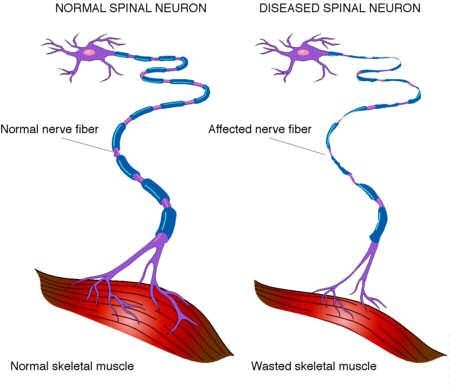
A case of Equine motor neuron disease (EMND)
Equine motor neuron disease (EMND) is a neurodegenerative disease of the lower motor neurons in horses, which was first described in 1990. The brainstem, cerebellum, and/or the ventral horn of the spinal cord are degenerated and/or necrosed (mortified) because of damage to motor neurons. The disease has similarities to ALS in humans. Symptoms are muscle atrophy, tremors, weight loss (despite good appetite), spasms, gait with short steps, wasting, stress on the hind limbs, flat head, and tail raising.
This study describes an EMND case of a heavy gelding (980 kg, 5 years). The horse suffered from severe ataxia of the fore- and hind limbs. He leaned against the wall and collided to the wall and door when he came out of the stable. He also showed lethargy, torticollis and flaccid lower lip. Because he did not improve after drug therapy a pathologic autopsy was performed
The myelogram showed no abnormalities or characteristics of Wobbler syndrome, which can produce similar symptoms. Axonal swellings and degenerations in various nuclei were found, such as the cerebellar dentate nucleus and the nucleus of the hypoglossal nerve. In the ventral horn of the spinal cord, axonal swellings and degenerations similar to that of the cerebellum were found. Blood tests were within normal ranges, just as vitamin E level (although a possible cause of EMND includes reduced serum vitamin E). However, this case was diagnosed in an early stage of EMND.
> From: Sasaki et al., J. Vet. Med. Sci. 68 (2006) 1367-1369. All rights reserved to Japanese Society of Veterinary Science. Click here for the online summary.


